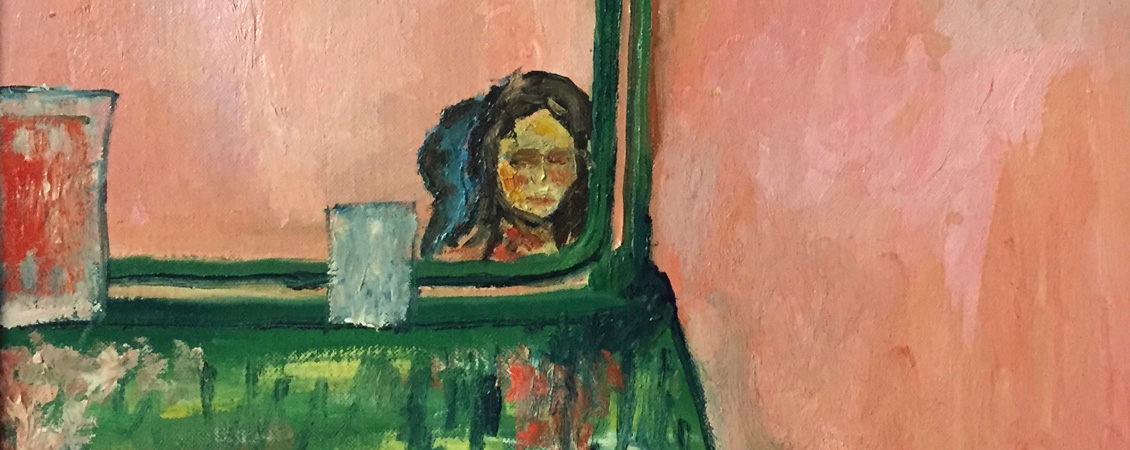POV: Out of Body - Anchor House of Artists
Digital Exhibition
Genevieve Burnett, Mary Dunn, and Deborah Sklar, women connected to the Anchor House of Artists project their experience into a claustrophobic world.
February 9 - March 9 | Free Event
Opening Reception: Tuesday, February 9, 6 p.m. ET, Online
View Exhibition
 Sign the Guest Book
Sign the Guest Book
Click here to see pieces from the exhibition on display at Anchor House of Artists
Statement by Michael Tillyer, Founding Director of Anchor House of Artists
Living with a mental illness is annoying and painful. It is a part but not a whole of life, though living with its association can be claustrophobic. Going for help is asking to join a parallel society where relationships crop up without invitation or fail without apparent reason. It is a boundary world that within, even though joy is attainable, it is harder to share casually for it may be subject to assessment rather than be shared. This sounds like I think the world is mean, I do not. It is that we all have our places. Some places are easier to live in our bodies than others, and if one is subject to losing one's inner guidance to defend the self, finding the door to a safe home without is a tremulous reach. The shadows can seem more attainable, it is easier to slip away.
I founded the Anchor House of Artists in 1997 because the art world was not free to all. In character, the art world is a market place but in spirit, the creative life is more about using freedom in search of value. Freedom is a luxury. Its price is not only fiduciary, it is social. The currency of freedom is prestige, privilege, and exception. These are all good things, they are earned. However, one cannot earn these things without opportunity.
The work of the Anchor House of Artists is to build opportunities for freedom for artists living with mental illnesses. Without it, there are possible creative outcomes. One’s work can find its way to the specialty, fringe outsider art market. One can give work away to friends or friendly treatment professionals. One’s studio practice can come to the attention of art therapist types in institutional settings who will then offer inductions into the therapy arena. These are bearable outcomes, yet each comes with the cost of stigma. There is no substituting the freedom of a personal studio space without bounds though, and there no greater power for artists to become a part of a milieu of creative professionals, thus artists in their own right. We arrived at the conclusion that the mission of the Anchor House of Artists is to subsidize the studio space for artists living with mental illnesses, to represent the work that they make, to fight the stigma they face, and to bring new art to Western Massachusetts and beyond. That is not too high a price to ask of a willing community, is it?
Three women that I came to know over the years on my way to formulating the idea of the Anchor House of Artists articulated the difficulty of having enormous talent with the personal liability of mental illness. Each one navigated the world in ways I could not imagine myself attempting in their circumstances. They each were remarkable people. They would not have known it but two of them inspired in me the will to create a subsidized studio that would give them all a chance to gather as artists, work, and have access to exhibition opportunities and sales.
My life would not have been as rich had I not found a way to make and sustain the Anchor House of Artists, and it would not have been the place it is without them. Genevieve Burnett woke me up to the potential accomplishment buried in the parallel universe of intuitionalism. Mary Dunn reinforced and broadened my comprehension of stigma. Deborah Sklar rewarded me for having taken the risk to open the door. All three of them are not the beneficiaries of the cause they are the actors that caused it. The loss has been grieved and now it is time again and again to celebrate them.
...or browse our full event calendar



 Online
Online
 Free ticket required for opening reception.
Free ticket required for opening reception.

 Sponsored by :
Sponsored by :




